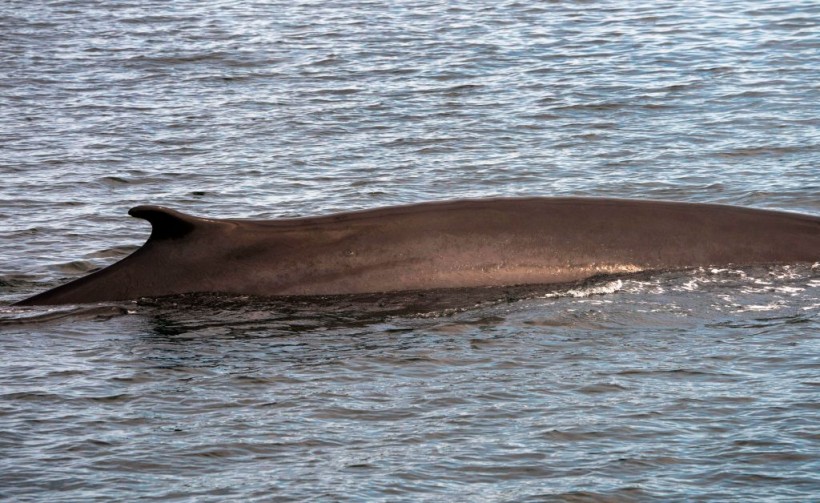Science reports recently said a so-called "oral plug" made of fat and muscle found at the back of the mouths of fin whales might offer a hint.
The plug, in particular, a ScienceNews report specified, blocks the channel in the middle of a fin whale's mouth and pharynx, the doorway to the digestive and respiratory tracts.
Essentially, some of the largest whales of the world feed by lunging through the water with their mouths wide open.
In connection to this, scientists have long wondered how such animals endure the water's tremendous pressure that rushes into their throats minus choking and drowning.
ALSO READ: Fin Whale Songs, Could It Reveal Secrets Beneath the Ocean Floor?

A fin whale, the second-largest species on Earth after the blue whale, swims in the waters of Cape Cod Bay on April 14, 2019, near Provincetown, Massachusetts.
The Plug as a 'Trapdoor'
In their research published in Current Biology, the researchers described the plug that "appears to present water" from rushing into the lungs and stomach of the whale while its lunches. The study could explain how all lunge-feeding whales are eating without choking.
From the University of British Columbia in Vancouver, Marine biologist Kelsey Gil said, "Think of the plug as a trapdoor." She added it is always closed unless a muscular activity pulls it out of the way.
Gil, together with her team, we're able to identify the plug following further examination of the pharynx of about 19 Balaenoptera physalus or fin whales that were recovered from an "Iceland whaling station."
Since fin whales are said to be extraordinary eaters and can have a 100-metric-ton weight, similar to the size of a midsized passenger plane, it was easier to work with only the pharynx.
Gil added even then; they had to employ a forklift to move the pharynx to the laboratory. He continued saying it weighs a few hundred pounds.
Different Structures in Pharynx Manipulated
When the samples were in the lab, the team manipulated different structures in the pharynx to find out how they could move.
They also looked at which direction muscle fibers ran within the throat of the whales to understand the manner muscles are behaving when they contract.
As a result, the researchers found that when a whale gulps water, the pressure is leading to the plug, producing a tight seal over the pharynx of the whale.
Then, with a mouth filled with prey and water, a fin whale, detailed in the World Wildlife Fund site, pushes out the water through the baleen plates before swallowing.
Perhaps, the swallow reflex stimulates the muscle that's pulling the plug up above its throat, blocking the upper airways and allowing prey to slide into its digestive tract.
The scientists explained that the oral plug, which appears to be unusual among mammals, may provide better insight into how other lunge-feeders are eating minus choking on water.
The 'Oral Plug' Discovery
According to an expert in large whales, Sarah Fortune, from the Dalhousie University in Halifax, Nova Scotia, the "oral plug" discovery answers a long-lasting question on how whales can, at the same time, protect their respiratory tract while opening their mouths wide to consume prey-laden water.
Fortune, who was not involved in this recently published study, also said it helps them understand further as well the adaptations that allowed once terrestrial mammals to evolve, returning to being "sea-dwelling creatures.
Related information about feeding whales is shown on Colin Ruggiero's YouTube video below:
RELATED ARTICLE: More Than 70 Gray Whales Dead in 6 Months, and Scientists Don't Understand Why
Check out more news and information on Whales in Science Times.














